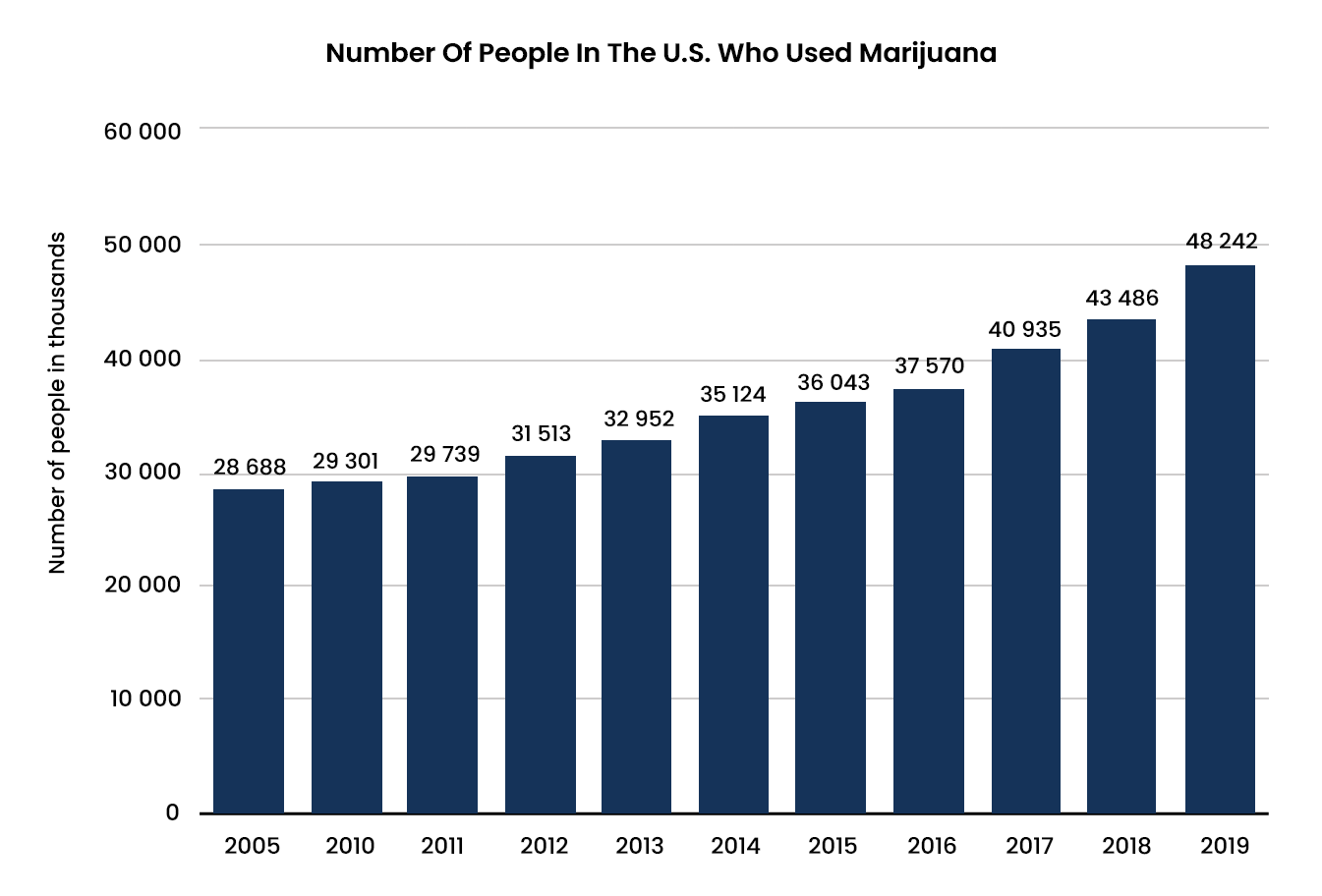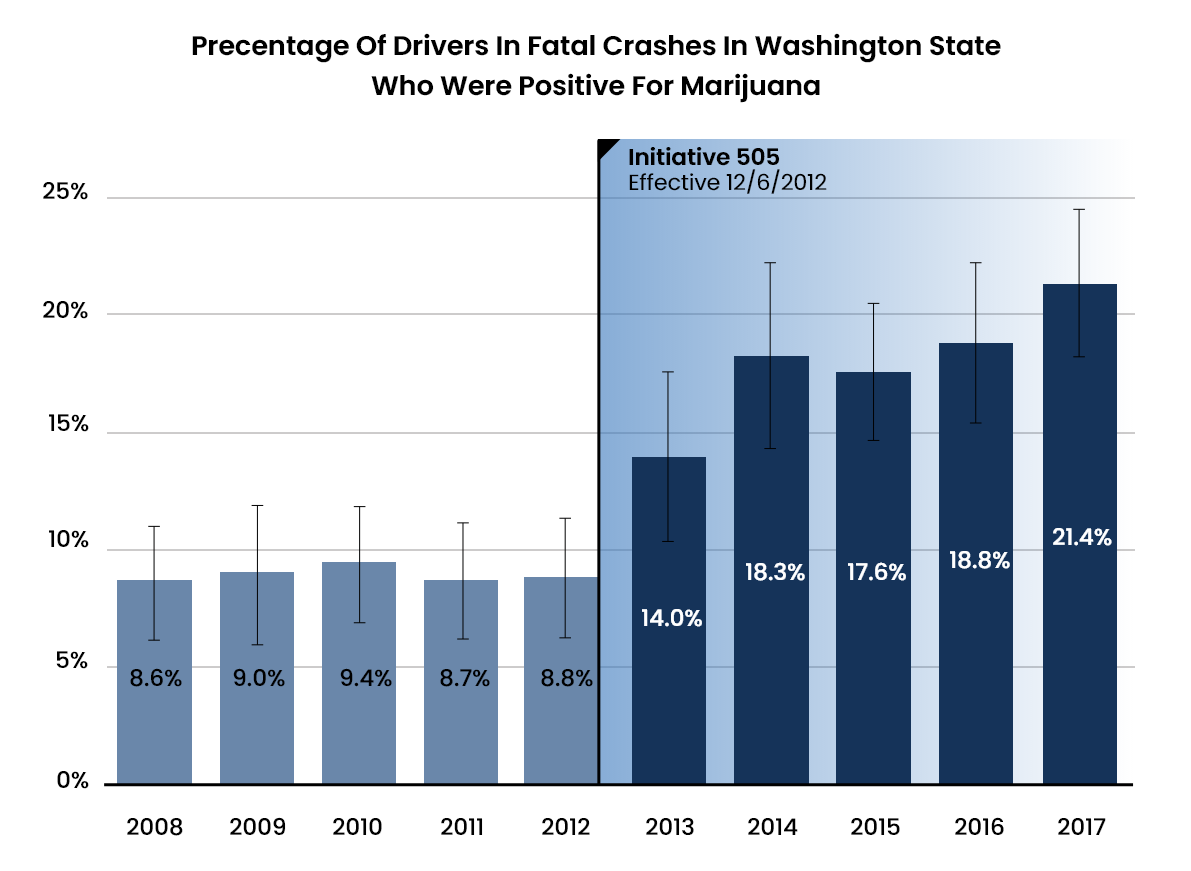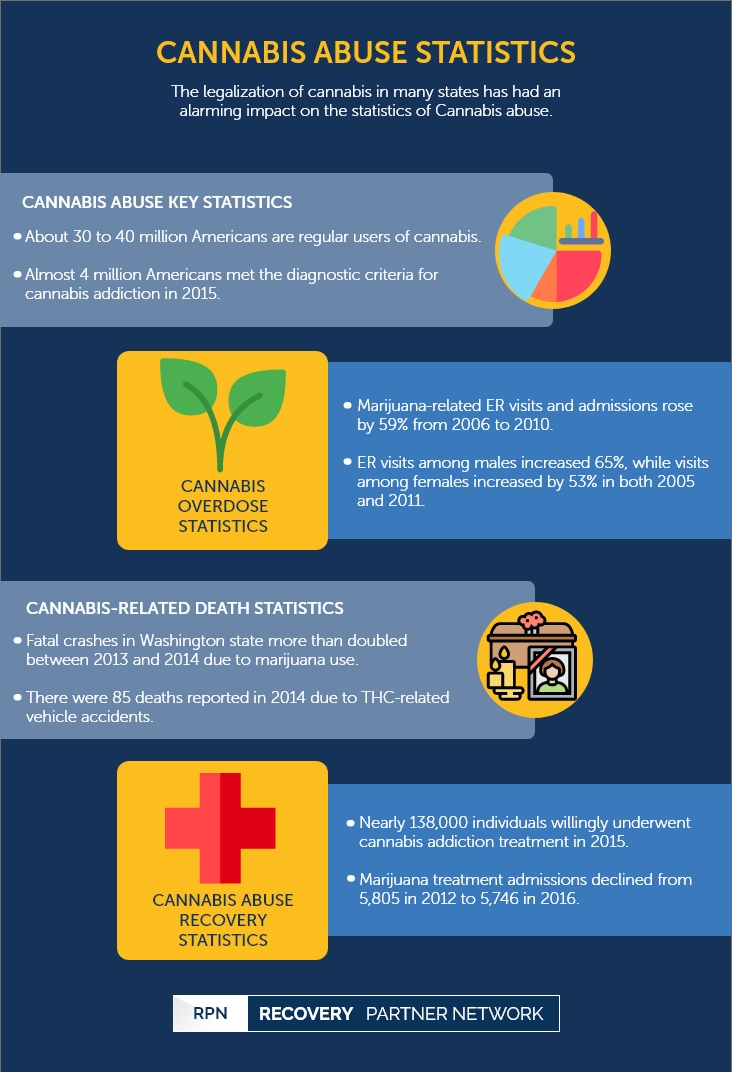The legalization of Cannabis in many states has had an alarming impact on the statistics of Cannabis abuse.
Cannabis Abuse Statistics
Substance use disorder
- Alcohol abuse statistics
- Amphetamine abuse statistics
- Cannabis abuse statistics
- Cocaine abuse statistics
- Heroin abuse statistics
- Illicit drug abuse statistics
- Inhalant abuse statistics
- Methamphetamine abuse statistics
- Opioid abuse statistics
- Prescription Drug abuse statistics
- Tobacco abuse statistics
Cannabis abuse statistics | Table of Contents
Cannabis Abuse
Also referred to as marijuana, dope, weed, pot, or grass, Cannabis is a psychoactive drug
derived from the Cannabis plant. In recent years many states in the US have legalized Cannabis
for various medical and recreational use. Cannabis is medically used to alleviate stress and pain
and to improve appetite, while it is recreationally used for its calming and high effects.
Contrary to the legalization of Cannabis in many US states, the statistics exhibit an alarming
insight into the consequences of Cannabis abuse.
Cannabis Abuse Key Statistics
- About 30 to 40 million Americans are regular users of Cannabis.
- In 2017, about 1.2 million Americans aged 12 to 17 and 525,000 Americans aged 26 and
above reportedly used marijuana for the first time. - In 2018, nearly 13 percent of 8 th graders, 27 percent of 10 th graders, and 35 percent of
12 th graders admitted to using Cannabis at least once, while less than 1 percent of 8 th
graders, 3 percent of 10 th graders, and 5 percent of 12 th graders reported using it
regularly. - According to recent data, around 30 percent of individuals who use Cannabis may have
an addiction to it in varying degrees. - In 2015, almost 4 million Americans met the diagnostic criteria for Cannabis addiction.
- Cannabis dependence is twice as prevalent as dependence on other illicit psychoactive
drugs such as heroin and cocaine. - Marijuana abuse has significantly increased in the past decade among young adult
African–American men and women and Hispanic men. - Cannabis use among men is relatively higher than in women. Approximately 14.7
million men use Cannabis compared to the 9.3 million women who use Cannabis. - About 62 percent of adults who used marijuana before the age of 15 went on to abuse
cocaine at some point in their lives, while around 9 percent and 54 percent went onto
use heroin and mind-altering prescription drugs respectively at some point in their
lives.

Cannabis-Related ER Statistics
Although there remain no reported cases of a Cannabis overdose, Cannabis does possess the
second-highest rates (after cocaine) for emergency room visits.
- According to the United Nations Office on Drugs and Crime (UNODC), marijuana-related
emergency room visits and admissions rose by 59 percent from 2006 to 2010. - The number of marijuana-related ER visits for adolescents aged 15 to 17 years was 61
percent higher in 2011 than in 2005. - Visits among males increased 65 percent, while visits among females increased by 53
percent in both 2005 and 2011. - Between 2004 and 2011, cannabis-related ER visits showed the largest increase in
adolescents aged 12 to 17 from 79 to 159 per 100,000 population - Emergency Room (ER) visits related to cannabis abuse was most prevalent among non-
Hispanic blacks between 2004 and 2011. - Reports reveal that there was a three-fold increase in cannabis-related ER visits
between 2012 and 2018 in Colorado.

Cannabis-Related Death Statistics
The indirect deaths caused by Cannabis abuse is mainly attributed to motor vehicle accidents
and workplace accidents due to intoxication.
- As per the American Automobile Association (AAA), the percentage of drivers who were
high on Cannabis during fatal vehicle accidents in Washington increased from around 9
percent in 2009 to 21.4 percent in 2017. - There were 85 deaths reported in 2014 due to THC related vehicle accidents.
- From 2007 to 2014, the number of nighttime weekend drivers in the US with marijuana
in their system increased by 50 percent. - Fatal crashes in Washington state more than doubled between 2013 and 2014 due to
marijuana use. - According to AAA, in 2014, 1 in 6 drivers involved in fatal crashes tested positive for
marijuana. - Toxicology reports indicate that around 16.8 percent of all patients who died of suicide
tested positive for Cannabis. - The percentage of drivers involved in fatal crashes in Washington state who tested
positive for THC has doubled since the state legalized marijuana for recreational use.

Cannabis Abuse Recovery Statistics
With the legalization of Cannabis across various US states, the rate of treatment admissions for
cannabis addiction has significantly decreased.
- In 2015, nearly 138,000 individuals willingly underwent treatment for cannabis
addiction. - According to the Substance Abuse and Mental Health Services Administration
(SAMHSA), the number of admissions for cannabis treatment increased from 16
percent in 2005 to 19 percent in 2010 and decreased again to 14 percent in 2015. - Marijuana treatment admissions decreased from around 5,805 in 2012 to 5,746 in
2016, in Colorado. - An average batch of marijuana in 1990 held less than 4 percent of THC. This has since
risen to over 12 percent, resulting in a more potent substance.

Economic Costs of Cannabis Abuse
Even though Cannabis is legalized across many US states, its consumption costs the economy
millions of dollars in illegal cannabis production, hospitalization, and incarceration.
- According to the US government’s estimates, domestic marijuana production has grown
from 1,000 metric tons in 1981 to 10,000 metric tons in 2006 (an increase of almost ten
folds over the last twenty years). - Despite legalization, illegal production of Cannabis soared from 700,000 pounds in 2017
to 1.6 million pounds in 2018. - Marijuana users in the US spent over $10.5 billion on the substance in the year 2000
alone. - Marijuana arrests in the US have increased dramatically since 1992. Nearly half (44%) of
the roughly 1.9 million annual drug arrests were for marijuana. - Incarceration due to marijuana possession reduces the rate of wage growth by about
30% over the course of a person’s lifetime. - According to a report published by the ACLU, the police enforcing possession laws that
lead to arrests costs police $3.6 billion each year. - Total spending on Cannabis, from both illegal and state-licensed sources, increased by
approximately 50 percent from 2006 to 2016, from $34 billion to $52 billion.

Recovery Partner Network
We aim to educate and empower. If you feel our library of resources does not cover your specific need, reach out to us, and we would be happy to help.
STATISTICS
© Copyright 2025


